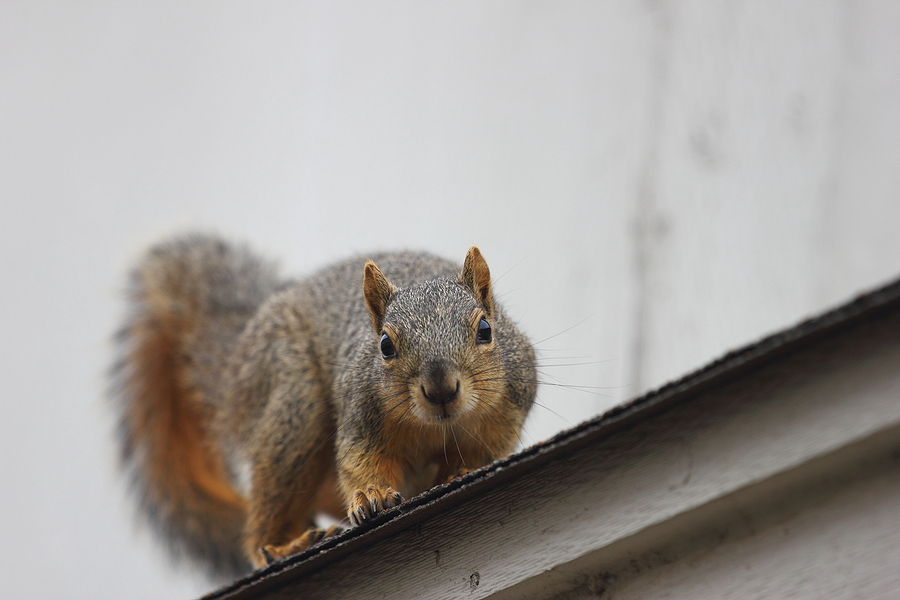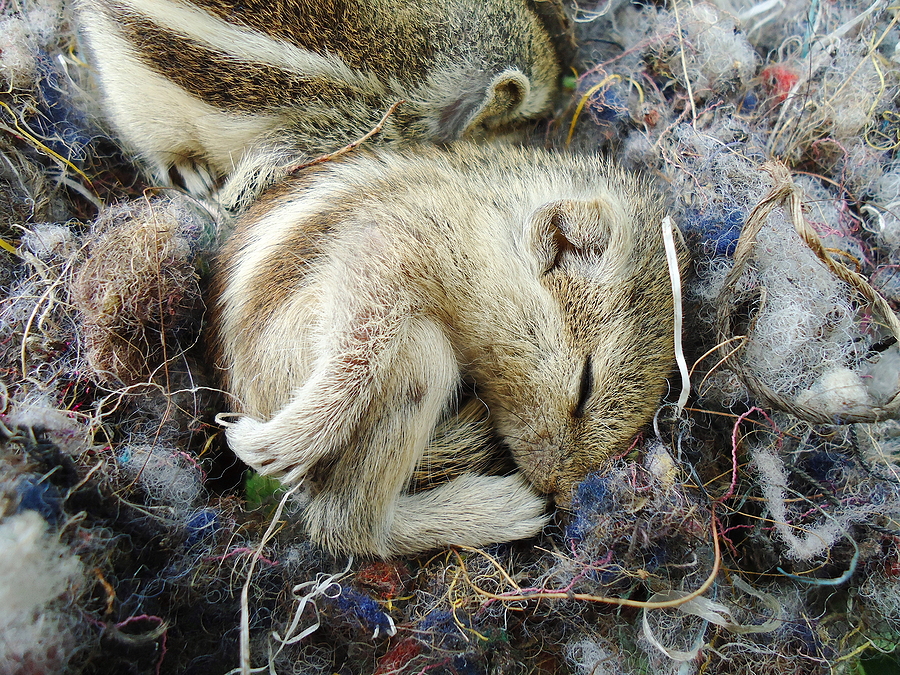Squirrels may appear cute and harmless, but when they turn your attic into their personal playhouse, it’s a whole different story. Squirrel infestations in urban and suburban homes are on the rise, with attics serving as a prime nesting spot for these furry invaders. Left unchecked, squirrels in the attic can cause significant damage and compromise the safety of your home.
If you’re hearing scurrying noises overhead or noticing unexplained damages, you might be dealing with these uninvited tenants. This guide covers everything you need to know about identifying, removing, and preventing squirrel infestations.

Understanding Squirrel Activity and Tampering as Attic Tenants
To effectively tackle a squirrel infestation, it’s essential to understand why attics are such a hotspot for these critters. Squirrels are incredibly resourceful and adaptable creatures. Their primary motivations for entering homes are shelter, warmth, and a safe space to raise baby squirrels. Attics provide an ideal environment, protecting them from predators and harsh weather while offering plenty of insulation to build nests.
Key behavioral traits of squirrels include:
- Gnawing on surfaces to maintain their ever-growing teeth
- Building multiple nests, commonly referred to as “dreys”
- High activity levels during the early morning and just before sunset, which is when you’re most likely to hear them
Their intelligence and ability to exploit tiny openings in roofs, vents, and siding make them tricky adversaries.
Signs of an Attic Infestation
Not sure if you have squirrels in your attic? Here are the telltale signs of an attic infestation to watch out for:
- Unusual Sounds: Scratching, scampering, or chewing noises coming from above, especially at dawn or dusk.
- Droppings: Small, elongated droppings around your attic.
- Chewed Entry Points: You may notice damage around vents, eaves, or insulation due to their incessant gnawing.
- Nest Building Materials: Twigs, leaves, or shredded insulation in your attic could be signs of nest construction.
- Distinctive Odors: Squirrels bring in food and leave droppings, which can create unpleasant smells over time.
Spotting these signs early can prevent significant damage from occurring.
The Dangers of Squirrel Infestations
Having a few squirrels in your attic might not seem like a big deal, but their presence can cause a range of problems, including:
- Structural Damage – Squirrels are relentless chewers. They’ll gnaw on wood beams, insulation, and even electrical wires, which increases the risk of fires and structural instability.
- Health Risks – Squirrels are carriers of parasites such as fleas, ticks, and mites, which could spread to your pets or family members. Additionally, their droppings can carry diseases like leptospirosis.
- Noise Disturbance – The constant scampering and scratching can disrupt your sleep and daily peace, making life uncomfortable.
The longer squirrels stay in your attic, the more damage they’ll cause, so prompt action is critical.
DIY vs. Professional Squirrel Removal
When it comes to squirrel removal, you have two primary options: DIY methods or professional wildlife removal services. Here’s a comparison to help you decide:
DIY Methods
Benefits:
- Cost-effective
- Immediate action can be taken
Drawbacks:
- Time-consuming
- Risk of injury or failure if not done correctly
Professional Wildlife Removal Services
Benefits:
- Guaranteed results
- Knowledge of legalities surrounding wildlife removal
- Access to specialized tools and expertise
- Infestation cleanup and attic restoration experts
Drawbacks:
- Higher upfront costs
While DIY methods might work for minor issues, extensive attic infestations often require professional wildlife removal and control services to guarantee success.
Effective Squirrel Removal and Control Techniques
If you’re ready to take matters into your own hands, here are some effective squirrel control methods to try:
Exclusion
Seal all entry points into your attic. Use heavy-duty materials like steel mesh to close gaps around vents, chimneys, and roof edges. Leave one exit point open temporarily to allow the squirrels to leave.
Trapping
Humane, live traps can be placed near entry points or nests. Use bait such as peanut butter or sunflower seeds to attract the squirrels. Once trapped, relocate them far away from your property (check local regulations on wildlife relocation).
Deterrents
Natural animal repellents and deterrents like predator scents (e.g., fox urine) or ultrasonic devices may discourage squirrels from returning.
Pro Tip: Do not use poison! Many cities and states have rules protecting squirrels, and improper use of poison can be harmful to other animals or pets.
How to Squirrel-Proof Your Home
The best way to handle squirrels in the attic is to prevent them from getting in at all. Follow these steps to animal-proof your home:
- Inspect Your Home Regularly: Look for holes, cracks, or weak spots, and repair them promptly.
- Trim Tree Branches Close to Your Roof: Branches that overhang your roof give squirrels easy access.
- Add Installations: Install Squirrel-Proof Vents and Chimney Caps.
- Secure Food Sources: Keep outdoor trash bins tightly sealed and remove bird feeders, as these attract squirrels.
By taking these proactive steps, you can reduce the likelihood of future infestations and save yourself the headache of dealing with unwanted attic pests.
Wrapping Up
Squirrel infestations are more than just a nuisance—they pose serious risks to your home and health. By identifying the signs early, exploring effective squirrel removal methods, and animal-proofing your property, you can reclaim your attic from these tiny tenants.
If you’re unsure where to start or want professional help, don’t wait. Contact a trusted wildlife control service today and take the first step toward a peaceful, squirrel-free home.
Act now to ensure a critter-free attic and home so that you can enjoy the tranquility you deserve. Contact Virginia Wildlife Pros at 804-292-0156 for professional squirrel removal and control in Richmond and its outer regions. We serve residential and commercial customers with free quotes, free advice, and quality work.
Related Posts:
Tiny Invaders: What to Do If You Find Baby Squirrels in the Attic
Do You Hear Squirrel Noises Coming From Your Attic? What To Do Next
Noisy Neighbors Upstairs? How to Handle Squirrels in Your Attic





